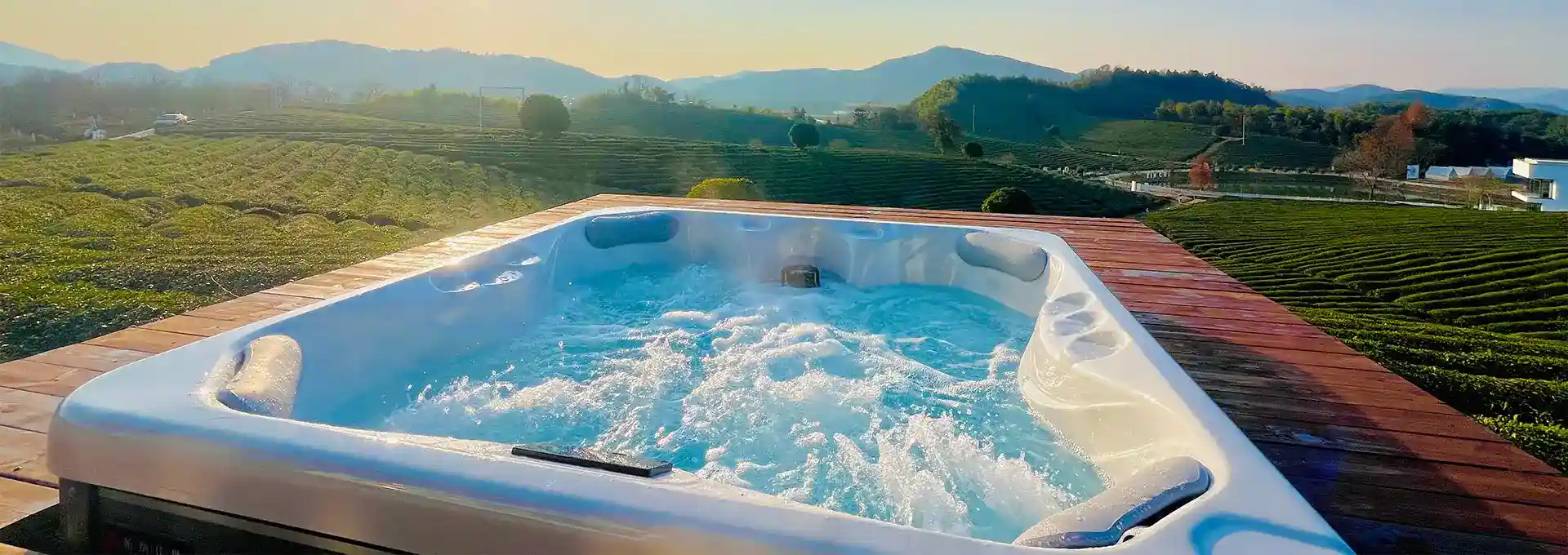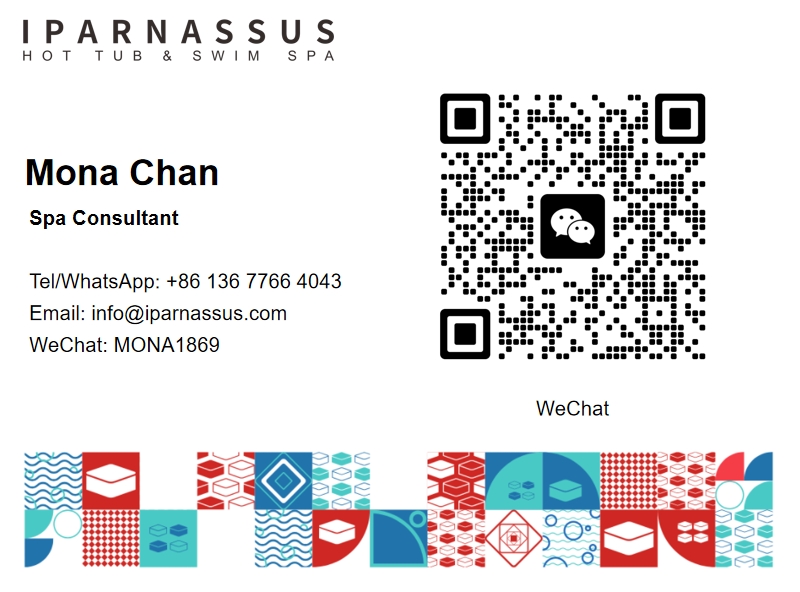What are the Energy Efficiency Features of a 7 person Swim Spa?
2025-02-24 14:28:10
A 7 person swim spa is a versatile and popular choice for those seeking the benefits of both a swimming pool and a hot tub in one compact unit. These innovative spa systems are designed to provide a complete aquatic experience while also focusing on energy efficiency. In this blog post, we'll explore the various energy-saving features that make 7 person swim spas an eco-friendly and cost-effective option for homeowners.
How do insulation systems contribute to swim spa energy efficiency?
Insulation plays a crucial role in maintaining the energy efficiency of a 7 person swim spa. Modern swim spas are equipped with advanced insulation systems that help retain heat and minimize energy loss. These systems typically consist of multiple layers of insulation materials strategically placed throughout the spa's structure.
One of the most common insulation methods used in high-quality swim spas is full foam insulation. This technique involves filling the entire cabinet space between the shell and the exterior with high-density foam. The foam acts as a thermal barrier, preventing heat from escaping and reducing the amount of energy required to maintain water temperature. Full foam insulation not only improves energy efficiency but also adds structural support to the spa, enhancing its overall durability.
Another effective insulation approach is the use of reflective barriers. These barriers are typically made of radiant heat reflective materials, such as foil-backed insulation, which are installed within the cabinet walls. The reflective surface bounces heat back into the spa, further reducing heat loss and improving energy efficiency.
Some manufacturers also incorporate thermal air gap technology into their swim spa designs. This method creates a layer of trapped air between the spa shell and the cabinet, providing additional insulation. The air gap acts as a natural insulator, slowing down heat transfer and helping to maintain consistent water temperatures.
In addition to these primary insulation systems, many 7 person swim spas feature insulated floor pans and covers. The floor pan insulation prevents heat loss through the bottom of the spa, while high-quality, well-fitted covers minimize heat escape from the water surface when the spa is not in use. These covers are often designed with tapered edges and locking mechanisms to create a tight seal, further enhancing their insulating properties.
By combining these various insulation techniques, manufacturers can significantly reduce the amount of energy required to heat and maintain the water temperature in a 7 person swim spa. This not only leads to lower operating costs for the owner but also contributes to a more environmentally friendly product overall.
What role do energy-efficient pumps and motors play in swim spa performance?
Energy-efficient pumps and motors are essential components in maximizing the performance and energy efficiency of a 7 person swim spa. These critical elements are responsible for circulating water, powering jets, and maintaining proper filtration, all while minimizing energy consumption.
Modern swim spas often feature variable-speed pumps, which offer significant energy savings compared to traditional single-speed pumps. Variable-speed pumps allow for precise control of water flow, enabling the system to operate at lower speeds during periods of reduced demand. This flexibility results in lower energy consumption and quieter operation, as the pump only uses the necessary amount of power for each specific task.
For example, during filtration cycles or when maintaining water temperature, the pump can run at a lower speed, consuming less energy. When higher water flow is needed for swimming or hydrotherapy, the pump can ramp up to higher speeds to meet the demand. This intelligent adaptation to usage patterns can lead to energy savings of up to 90% compared to single-speed pumps.
In addition to variable-speed pumps, many 7 person swim spas incorporate energy-efficient motors that comply with or exceed industry standards for energy consumption. These motors are designed to deliver optimal performance while minimizing power usage, often utilizing advanced materials and construction techniques to reduce friction and heat generation.
Some manufacturers have developed proprietary motor technologies that further enhance energy efficiency. For instance, some swim spas feature brushless DC motors, which offer higher efficiency and longer lifespan compared to traditional AC motors. These motors use electronic commutation instead of mechanical brushes, resulting in reduced energy loss and improved overall performance.
Another innovation in pump and motor technology is the use of smart control systems. These systems allow for precise management of pump speeds and operating times, optimizing energy usage based on factors such as water temperature, time of day, and user preferences. Some advanced swim spas even incorporate adaptive learning algorithms that analyze usage patterns over time and automatically adjust pump operation for maximum efficiency.
The integration of energy-efficient pumps and motors not only reduces the overall energy consumption of a 7 person swim spa but also contributes to a more enjoyable user experience. Lower energy usage translates to reduced operating costs for the owner, while quieter pump operation enhances the relaxation and tranquility typically associated with spa use.
How do heating systems and temperature control features affect swim spa efficiency?
Heating systems and temperature control features play a crucial role in the energy efficiency of a 7 person swim spa. These components are responsible for maintaining the desired water temperature while minimizing energy consumption, making them essential elements in the overall efficiency of the spa.
One of the most significant advancements in swim spa heating technology is the use of heat pump systems. Unlike traditional electric resistance heaters, heat pumps work by extracting heat from the surrounding air and transferring it to the water. This process is highly efficient, as it can produce up to five times more heat energy than the electrical energy it consumes. Heat pumps are particularly effective in moderate climates and can significantly reduce the energy required to maintain water temperature in a swim spa.
Many modern 7 person swim spas also incorporate titanium heaters, which offer superior efficiency and longevity compared to traditional heating elements. Titanium is highly resistant to corrosion and mineral buildup, allowing for more efficient heat transfer and reduced maintenance requirements. This durability ensures that the heater maintains its efficiency over time, contributing to long-term energy savings.
Advanced temperature control systems are another key feature in energy-efficient swim spas. These systems use precise sensors and sophisticated algorithms to maintain water temperature within a narrow range, reducing the need for frequent heating cycles. Some swim spas employ predictive heating technology, which anticipates temperature fluctuations based on factors such as ambient temperature, time of day, and usage patterns. By proactively adjusting the heating system, these spas can maintain consistent temperatures more efficiently than reactive systems.
Many 7 person swim spas also offer programmable temperature settings, allowing users to lower the water temperature during periods of inactivity or when away from home. This feature can result in significant energy savings, as maintaining a lower temperature requires less energy. Some advanced models even include smartphone integration, enabling users to remotely control and monitor water temperature, further optimizing energy usage.
Another energy-saving feature found in many swim spas is the use of multiple temperature zones. This allows users to maintain different temperatures in the swimming area and the spa section, reducing the energy required to heat the entire volume of water to the highest temperature. By heating only the necessary portions of the spa to specific temperatures, overall energy consumption can be significantly reduced.
The integration of circulation pumps with heating systems also contributes to improved energy efficiency. These low-power pumps continuously circulate water through the heater and filtration system, maintaining even water temperatures and reducing the workload on the main pumps. This constant, low-level circulation helps prevent temperature stratification and minimizes the energy required for heating and filtration.
In conclusion, the energy efficiency features of a 7 person swim spa are multifaceted and interconnected. From advanced insulation systems and energy-efficient pumps to sophisticated heating and temperature control technologies, these features work together to minimize energy consumption while providing an optimal aquatic experience. By investing in a swim spa with these energy-saving features, homeowners can enjoy the benefits of a versatile aquatic environment while reducing their environmental impact and long-term operating costs.
For more information on 7 person swim spa installations and our products, please feel free to contact us at info@iparnassus.com.
References
- Energy.gov. (2021). Heat Pump Systems. Retrieved from https://www.energy.gov/energysaver/heat-pump-systems
- Pool & Spa News. (2020). Energy-Efficient Pool Pumps: A Comprehensive Guide. Retrieved from https://www.poolspanews.com/how-to/maintenance/energy-efficient-pool-pumps-a-comprehensive-guide_o
- Swim University. (2021). How to Choose an Energy-Efficient Pool Heater. Retrieved from https://www.swimuniversity.com/energy-efficient-pool-heater/
- Hot Spring Spas. (2021). Energy Efficiency in Hot Tubs. Retrieved from https://www.hotspring.com/hot-tub-buying-guide/energy-efficiency
- Endless Pools. (2021). Energy Efficiency Features of Swim Spas. Retrieved from https://www.endlesspools.com/swim-spa-energy-efficiency
- Master Spas. (2021). Energy Efficient Swim Spas. Retrieved from https://www.masterspas.com/blog/energy-efficient-swim-spas/
- Hydropool. (2021). Self-Cleaning Swim Spas: Energy Efficiency. Retrieved from https://www.hydropoolhottubs.com/en_us/swim-spas/self-cleaning-swim-spas
- Aquascape Pools. (2021). The Benefits of Variable Speed Pumps. Retrieved from https://www.aquascapepools.com/blog/the-benefits-of-variable-speed-pumps
- Swim Spa Guide. (2021). Swim Spa Energy Efficiency: What You Need to Know. Retrieved from https://swimspaguide.com/swim-spa-energy-efficiency/
- APSP (Association of Pool & Spa Professionals). (2021). Energy Efficiency for Pools and Spas. Retrieved from https://apsp.org/resources/energy-efficiency



